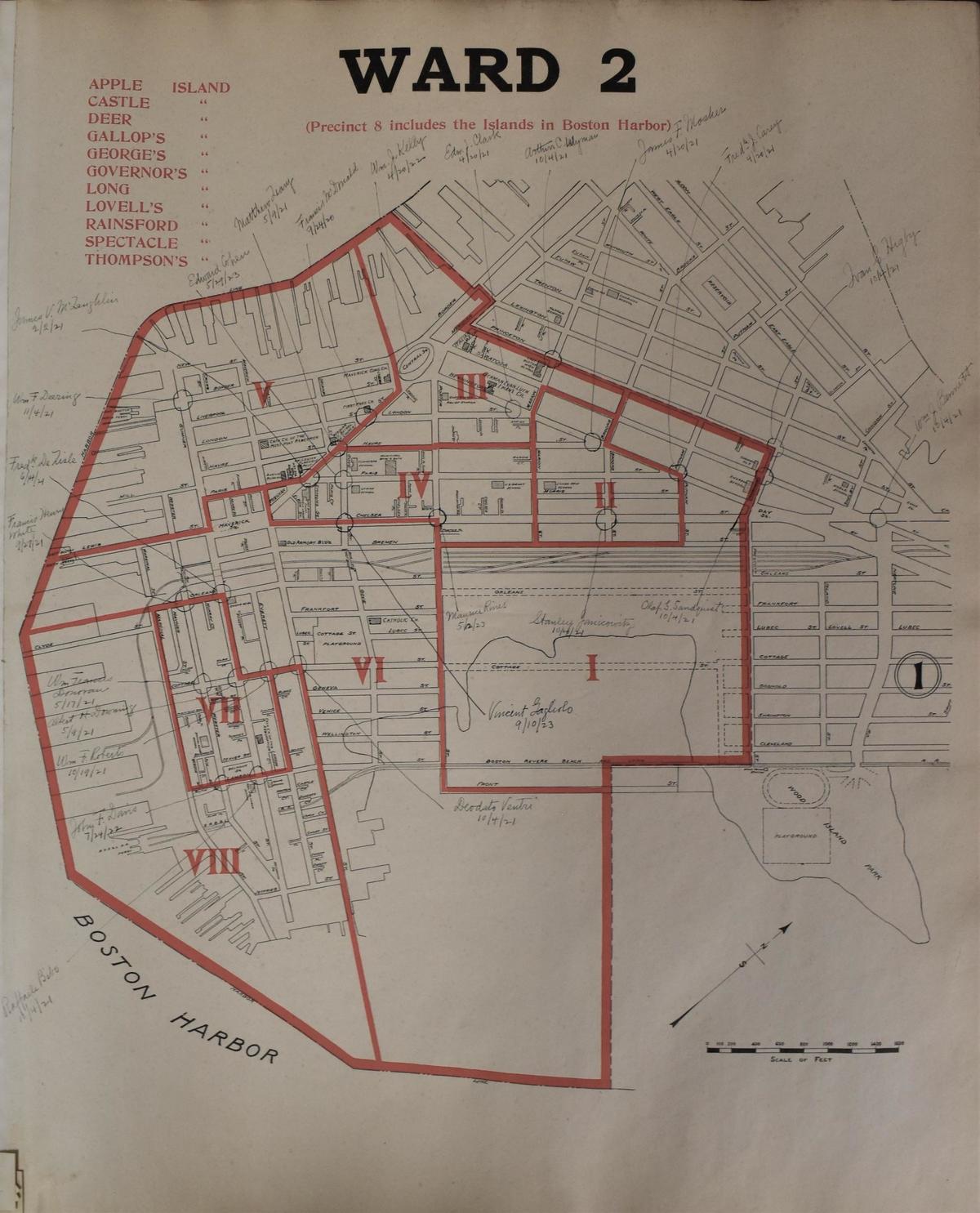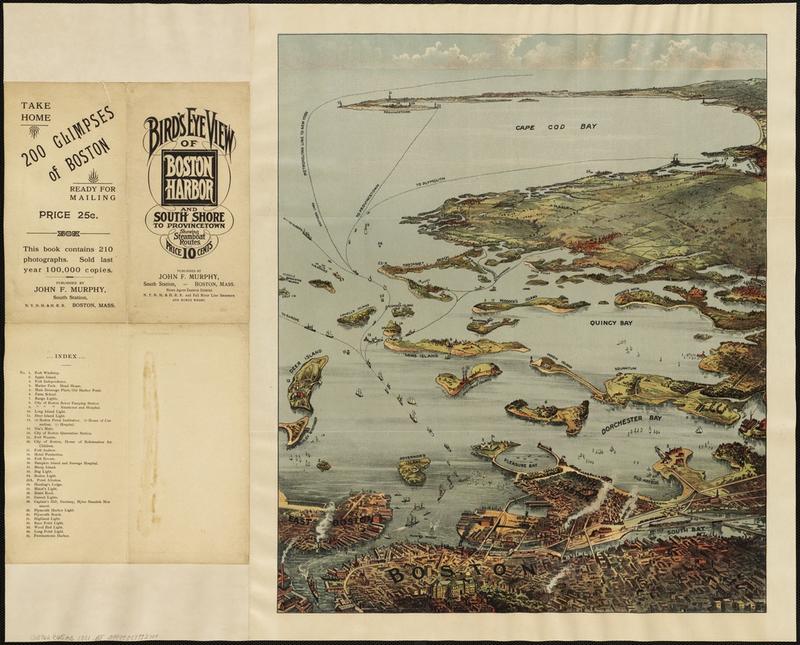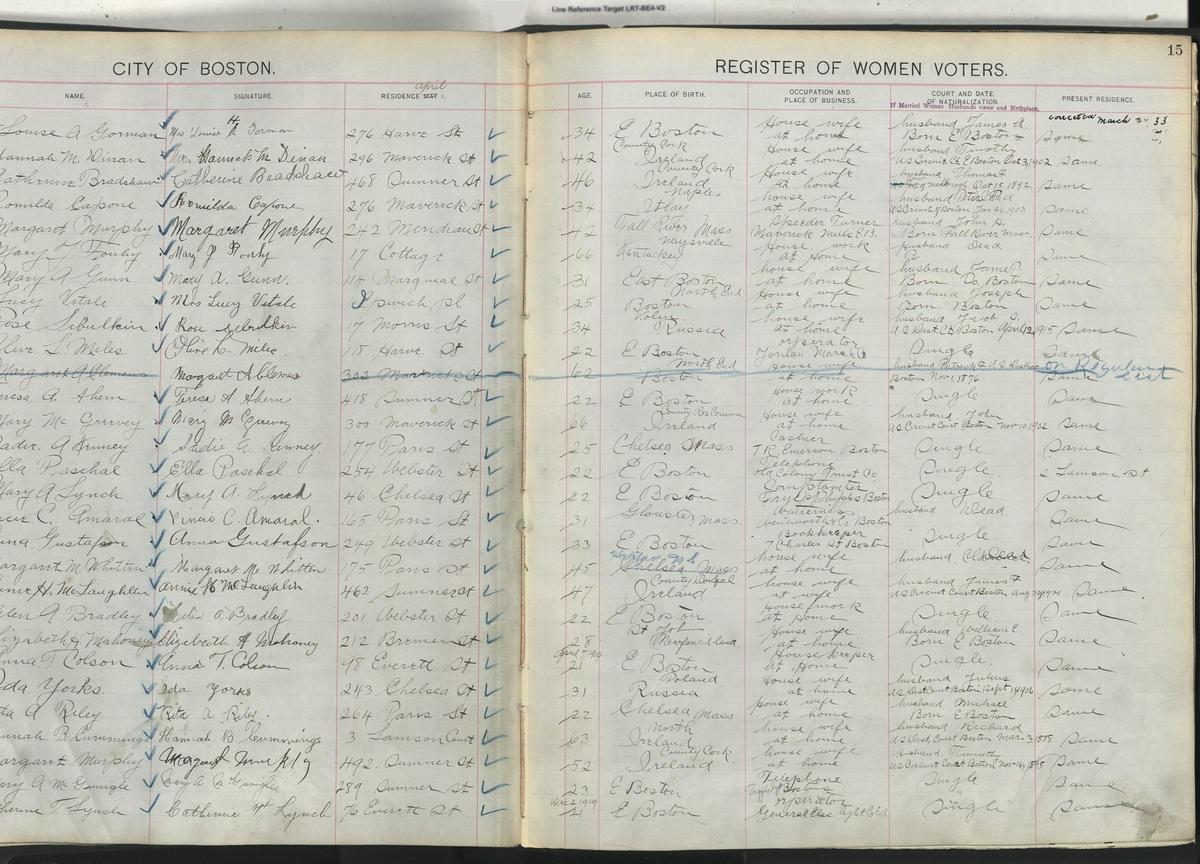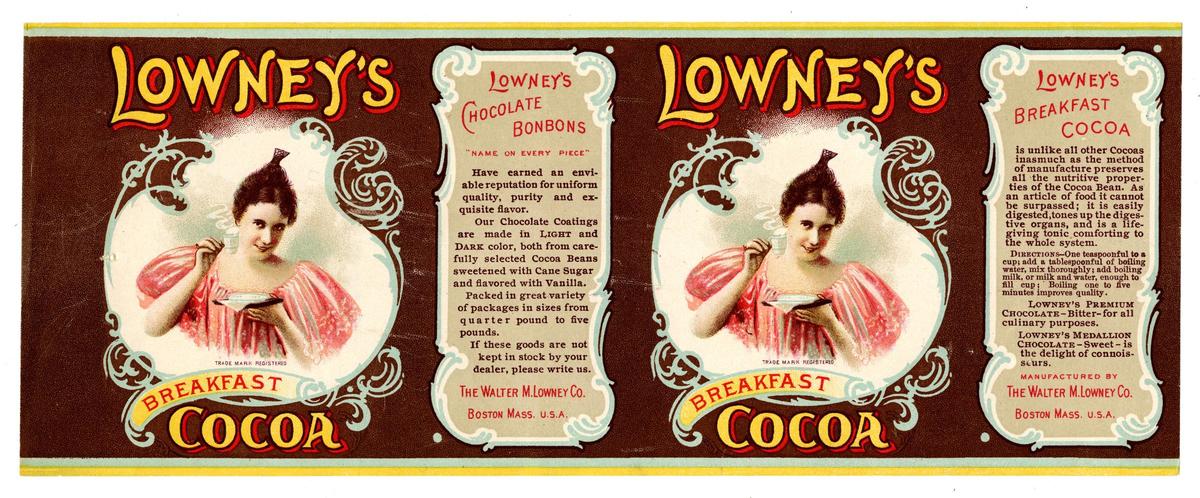The Mary Eliza Project: Ward 2 Voter Records Now Available
We've finished transcribing our Ward 2 Women's Voter Registers from 1920 and have added them into an easily accessible, searchable, and sortable dataset.
In August of 1920, the month that Tennessee ratified the 19th Amendment, the women of Boston began registering to vote. Women registered by the thousands, and on October 13, 1920, the last day to register before the 1920 presidential election, over 50,000 Boston women had registered to vote.
The 1920 Women's Voter Registers now live at the Boston City Archives and document women's names, addresses, places of birth and occupations. Sometimes women provided additional information about their naturalization process to become a US citizen, including where their husbands were born because in 1920, a woman's citizenship status was tied to her husband's nationality.
The Mary Eliza Project, named after African American nurse, civil rights activist, and Boston voter Mary Eliza Mahoney, is transcribing these valuable handwritten records into an easily searchable and sortable dataset. We have just finished transcribing the registers for Boston's Ward 2!
In 1920, Ward 2 covered one half of East Boston, from Princeton and Prescott Street to the harbor, including Eagle Hill, Maverick Square, and the Jeffries Point neighborhood.
Ward 2 also included the residents of the Boston Harbor Islands. Thus far, we have found five women living on the Harbor Island who registered to vote in 1920.
Nearly a third of women registering to vote in Ward 2 were foreign-born, the majority of whom had immigrated from Canada, Ireland, and Italy. A small, but significant, population of foreign-born women registering to vote in Ward 2 were from Eastern Europe and part of East Boston’s historic Jewish community. These 29 women listed their Place of Birth as “Russia” but hailed from cities and regions in present-day Poland, Belarus, Ukraine, and Latvia. Read more about the Jewish community in East Boston.
For Ward 2 women who worked outside of the home, the largest employers were the General Electric Company and the New England Telephone & Telegraph Company. Women working at these factories had diverse job titles and responsibilities. We found women working at General Electric listed as machine operators, "solderers," glass cutters, and inspectors.
Other notable places of work were several of the area’s candy manufacturers, including Cox Confectionary Company and the Walter M. Lowney Company, where women held such jobs as "candy worker," "chocolate dipper," and "box maker."
There is much more to explore in this new release into the dataset. Stay tuned for more research and writing about the newly transcribed entries.
The dataset is freely available to the public. Use the dataset yourself and let us know what you find!





